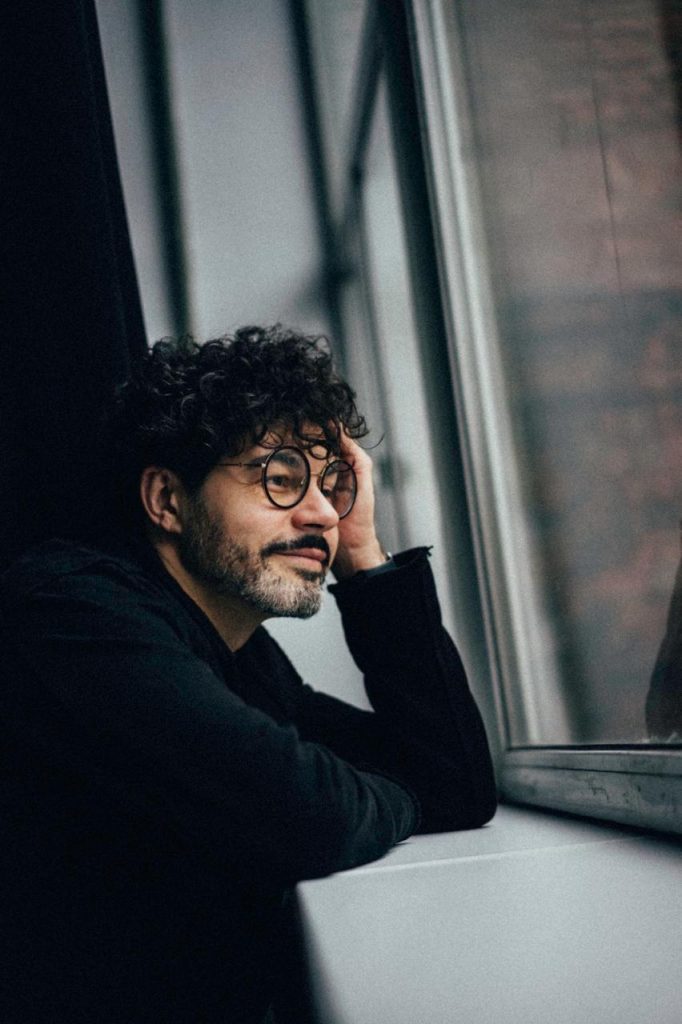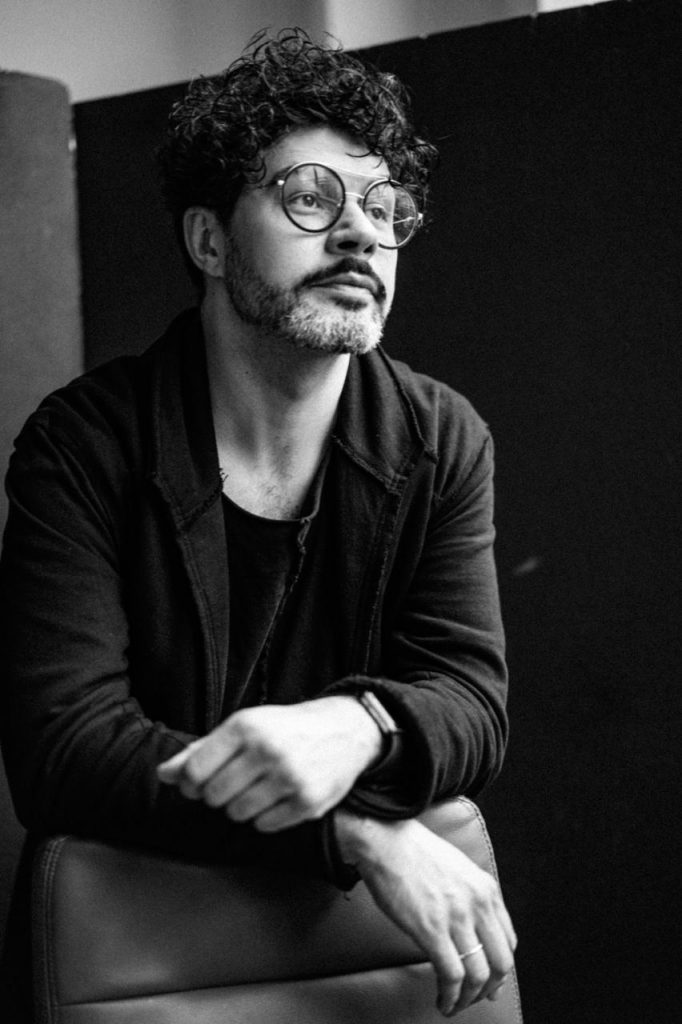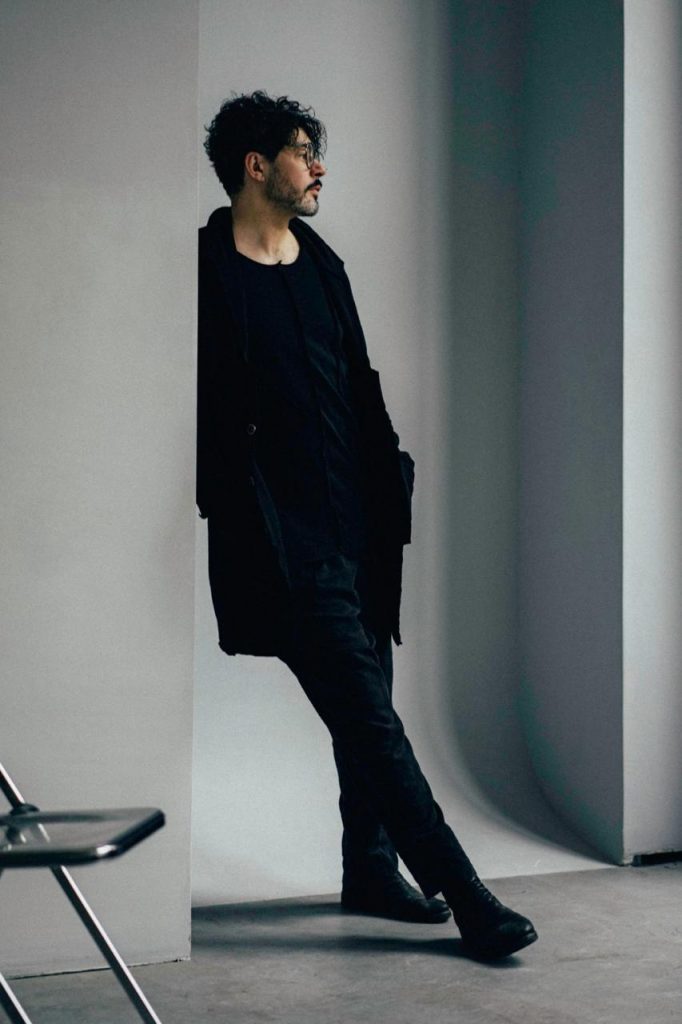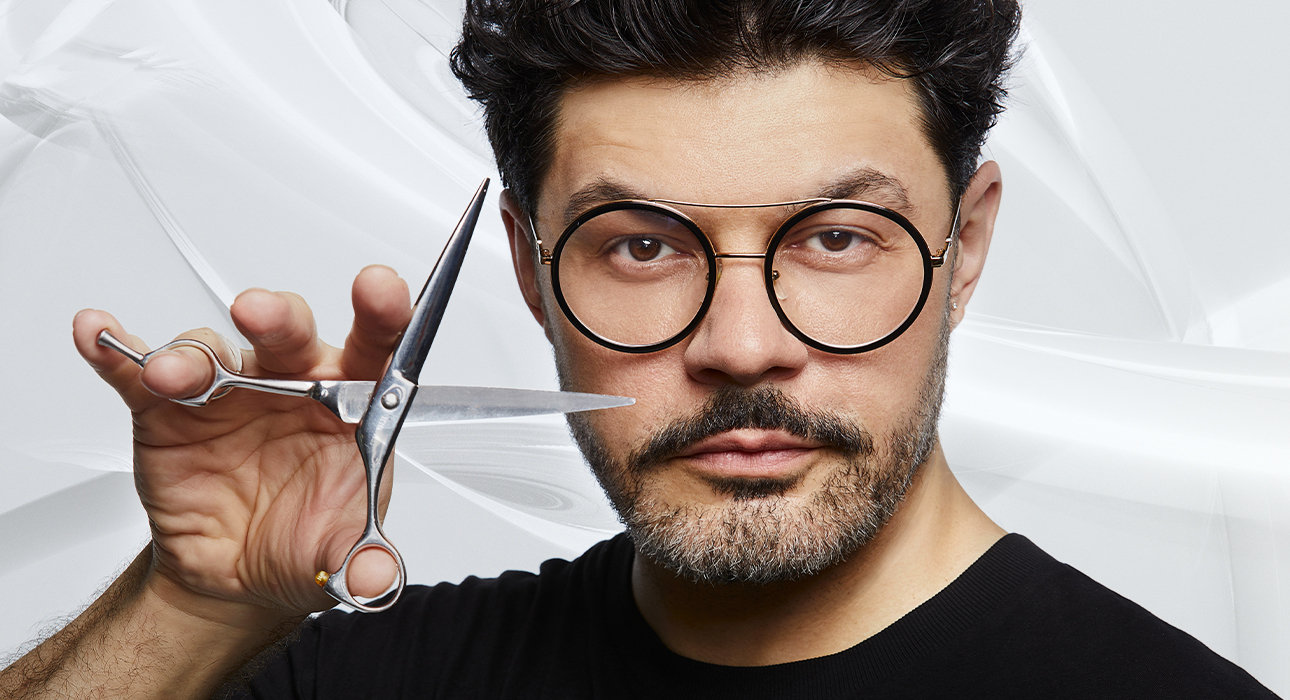Alexey Gorbatyuk is one of the most famous Russian hair stylists with over 30 years of experience. During his professional career, he managed to work with stars of various sizes, from Quentin Tarantino to Renata Litvinova. And today Alexey told The Fashion Vibes how his journey in the industry began and how he got his first client, and shared tips on how to find your master and unlock the potential of your hair.
You are a graphic designer by training. Can you tell us how you got into the hair industry?
My encounter with haircutting started with a bad haircut at the age of 13. I came to my favorite master, they said that he was on maternity leave. Previously, reservations could only be made by searching for great halls, for example, at Charodeyka on the Arbat. And in an ordinary hairdresser there would always be a long queue. And I came 18th in this.

At that time, there was a distinction between men’s and women’s halls, and there was not a single person in the women’s hall. The master saw my bored look and offered to cut my hair – he took the largest attachment and tore it apart so that I became a human ball, my head like a microphone. Luckily, I had scissors at home, so I stood in front of the dressing table mirror for about two hours, and then people started asking where I got such a nice haircut. Then one person returned, a second, a third… At the same time, I was studying at the folk youth theater, doing make-up, posing, working with wigs. Therefore, by the time I was 18, I was already self-taught in this field.
After the 11th grade at school, I was hired to work in a non-competitive salon. This was my first official job as a hairdresser. And at the age of 21, in my fourth year at the institute, I was invited to work in a salon on Rublyovka and moved to Moscow.
Do you remember your first customer?
This was my childhood friends’ mother. She had a bob haircut that naturally fell inwards. I was at my grandmother’s dacha during the summer holidays, and the neighbor said to me: “Lech, cut my hair.” “Aunt Paradise, I don’t know how,” I say. He says: “Hello, you cut your hair like this, it’s even easier for me.” We sat under an apple tree and I pruned it for two hours. And three months later he said his haircut was still there and that I cut his hair better than the girls at the salon.

I have worked in many different places in London, Paris, Italy and Spain. And you get certain skills from each school. If you compare haircutting with tailoring, in fact all classic clothes were invented in England. But the French always did the decoration. Lace, embroidery and decorativeness are the privilege of the French. The same goes for haircuts.
The structure and architecture of the haircut is English, while its processing (cutting, texture work) is French. And they’re very good at it. Italians also like to work with texture, but they do it more neatly because the hair in this area is almost the same type. After all, the hair structure of the French is different, some are denser, thinner, wavy and curly. They have more variety so they can deal with different hair textures. A mixture of different schools gives a good understanding of how to make candy from any hair.

What personal qualities help you in your profession?
Every time I treat a client like a newbie, I force myself to step out of my comfort zone. Even though he always wants the same thing, it is my sacred duty to offer him something new. The fact is that a person is constantly changing, he has different living conditions, different moods, his style of clothing changes, his perception of himself and those around him changes. Therefore, the haircut cannot remain unchanged.
A study was conducted in England: For what reason does the client stop visiting a specialist? Most of the respondents answered: “My master does not offer me anything new.” And the second reason: The customer died.
A common problem is that a person comes to the hairdresser and says: I want this. The master does this, the man sees that it does not suit him at all, but he cannot offer anything – he himself wanted it. Many hairdressers do not engage in discussion, do not make diagnoses and do not explain why one haircut suits one person and another does not. A haircut is an accessory. It’s like a well-tailored jacket with flat seams and quality lining and fabric. However, if this jacket is taken off someone else’s shoulder, in no case will it fit perfectly on someone else.

Haircuts, like many other things, are born in the process of dialogue. I’ve been photographing weddings for many years and have never done test makeup or hairstyling. It is impossible to give birth to a child on trial. It arises only from love. If you hear and understand each other during the argument, everything can be fixed. Hairstyle is not a reinforced concrete thing like makeup. The arrow can be raised or lowered at any time, and the style can also be adjusted.

You said in an interview that many people do not even realize the potential of their hair. How to open?
In my 30 years of career, I have never seen someone with a rectangular face shape have straight hair. People sit on my chair and I ask: “Why are you straightening your hair?” They are very surprised at that moment. I am not a psychic, I just see the architecture of the face and understand that nature must compensate for the lack of volume on the sides of the face with a wave. So the answer is to seek competent advice.
You can drop any g you want… but. And a good haircut will last even without styling. He dried it, shook his head and left. A good haircut will last not three weeks, but three months, or even longer.
What are your plans for the future?
I admire folk crafts. Therefore, I am interested in revitalizing Russian culture in a broad sense, influencing the perception and attitude towards it. It bothers me very much that in Soviet times folk crafts were given a negative status and now they are perceived as something rustic.
However, if we take the example of Dolce & Gabbana, they use folk art in their creativity and have turned it into a brand. Now we buy tin cans of panettone painted by Dolce & Gabbana for crazy amounts of money. Don’t we have cans in Zhostovo, Khokhloma that can be painted, or can’t we bake a delicious cake? I would like to revive our traditions because they are so beautiful.
Source: People Talk
I’m Roger Gritton, and I’ve been writing for the The Fashion Vibes for over 5 years now. My specialty is beauty news; I’m passionate about covering the latest trends, products, and innovations in the industry. In my time there, I’ve become known as an authority on all things beauty-related.
I love discovering new experts to interview, researching up-and-coming ingredients and techniques that are making their way onto our beauty shelves and highlighting people who are making a difference in the world of cosmetics. My work has appeared not only on The Fashion Vibes, but also several other publications including the New York Times Magazine, Allure Magazine and Refinery29.





